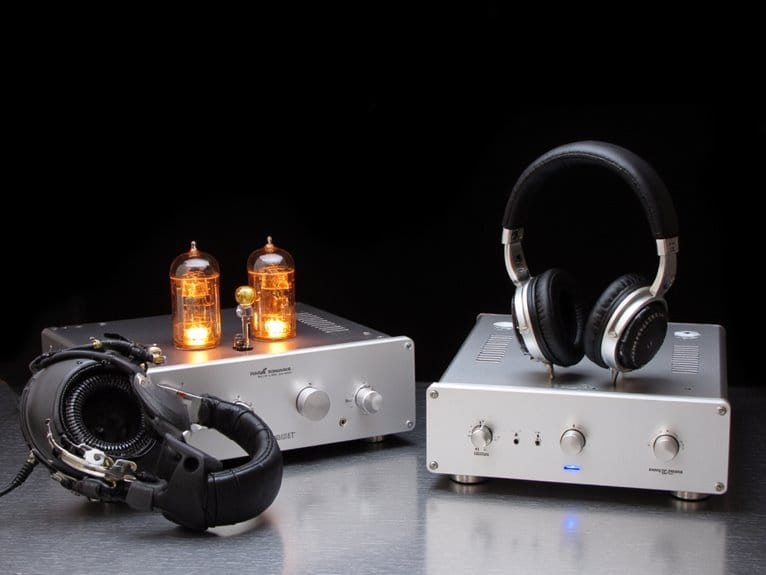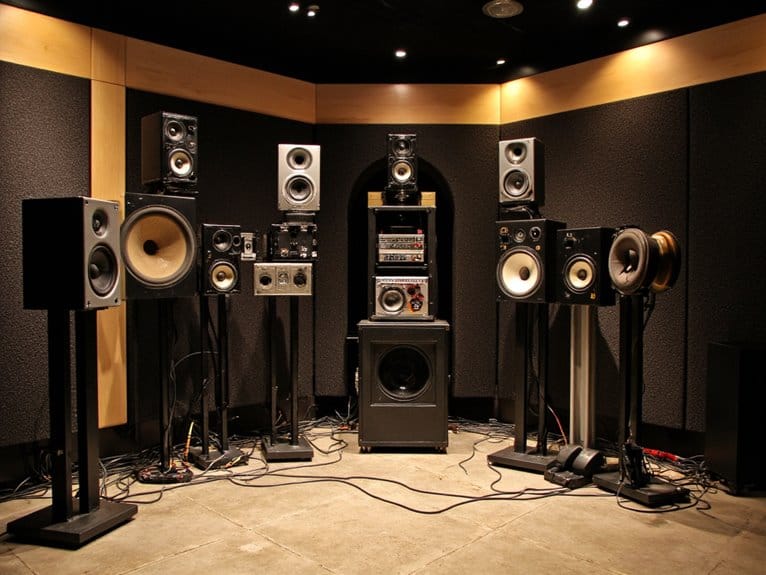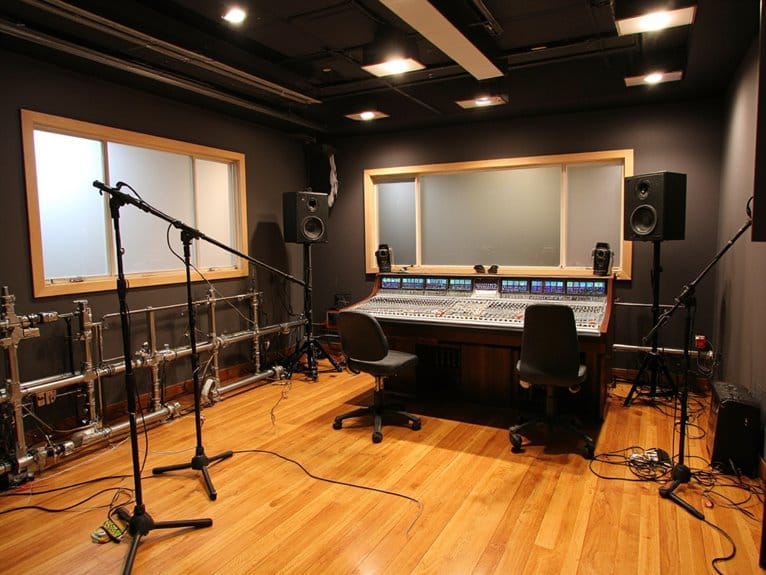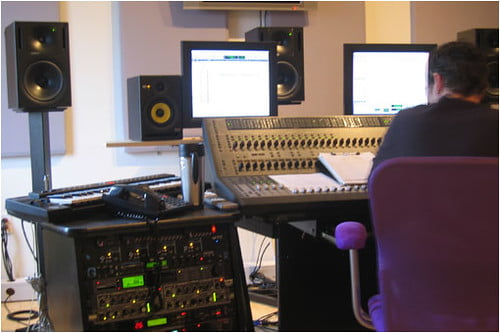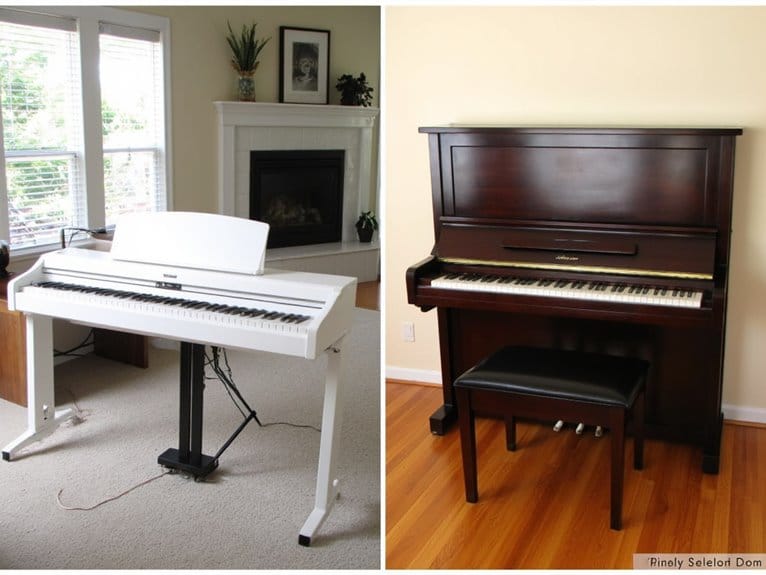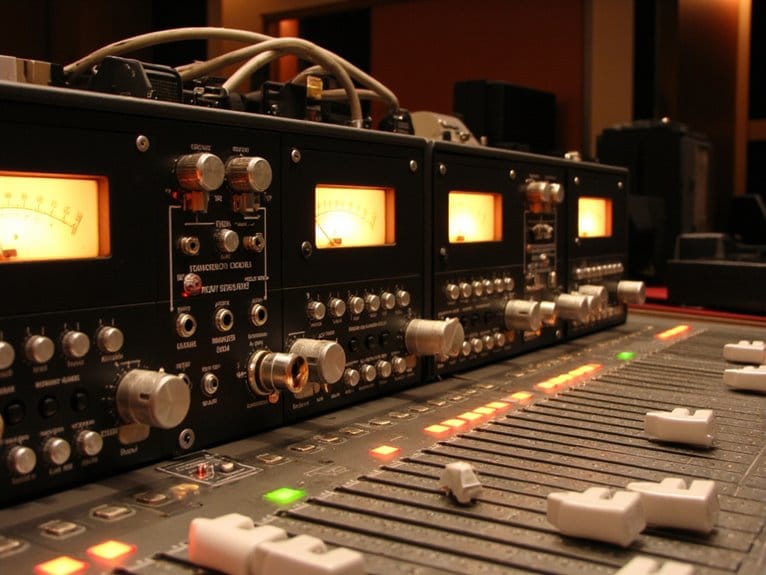Tube Vs Solid-State Headphone Amplifiers
You’ll choose between tube amplifiers that warm your sound with second-order harmonic distortion, creating fuller vocals and softer clipping, versus solid-state designs delivering clinical accuracy with transparent neutrality and superior soundstage depth. Tubes require regular maintenance, costing $300-500 upfront with ongoing tube replacements every 500-2000 hours, while solid-state amps start around $100-300 with virtually no upkeep. Your music preferences matter too-tubes enhance vinyl’s warmth while solid-state excels with electronic genres, and understanding these nuances will guide your perfect amplifier match.
We are supported by our audience. When you purchase through links on our site, we may earn an affiliate commission, at no extra cost for you. Learn more.
Notable Insights
- Tube amplifiers produce warmer, more musical sound with harmonic richness, while solid-state amps deliver clinical accuracy and transparency.
- Tube amps require regular maintenance and tube replacements every 500-2000 hours, whereas solid-state amplifiers operate virtually maintenance-free.
- Solid-state amplifiers cost $100-$300 initially with minimal long-term expenses, while tube amps start at $300-$500 plus ongoing maintenance costs.
- Tubes excel with vinyl and classical music by adding warmth and compression, while solid-state suits electronic genres requiring precision.
- Tube amplifiers are bulkier with fragile glass components, while solid-state designs are compact, lightweight, and impact-resistant.
Sound Character and Tonal Differences
When you’re diving into the world of headphone amplifiers, I’ve found that the most striking difference between tube and solid-state designs lies in their fundamental approach to sound reproduction, where tubes embrace a warmer, more musical character through second-order harmonic distortions, while solid-state amplifiers pursue clinical accuracy with their clean, linear amplification paths.
You’ll notice tubes create that fuller, thicker sound that makes vocals feel more intimate and instruments gain natural weight, particularly appealing with analog sources. The harmonic distortion tubes produce isn’t unwanted coloration-it’s musical enhancement that softens harsh frequencies.
Meanwhile, solid-state amps deliver transparent neutrality with superior soundstage depth precision, though they sometimes lack the organic warmth that makes long listening sessions more engaging. When pushed beyond their limits, tube amplifiers exhibit soft clipping characteristics that produce a smoother, more musically pleasing distortion compared to the harsh clipping of solid-state designs.
The brain’s natural preference for even harmonics over odd harmonics explains why tube amplification often feels more pleasing and familiar to listeners, as research suggests we’re inherently accustomed to these particular distortion patterns.
Build Quality and Maintenance Requirements
Beyond their sonic characteristics, I’ve discovered that tube and solid-state headphone amplifiers differ dramatically in their construction philosophy and long-term care requirements, where tubes demand the delicate handling you’d give a vintage wine collection while solid-state designs offer the reliability of a Swiss timepiece.
| Aspect | Tube Design | Solid State Reliability |
|---|---|---|
| Durability | Glass components, fragile | Robust transistors, impact-resistant |
| Maintenance | Tube replacement every 500-2000 hours | Minimal upkeep required |
| Size/Weight | Bulky transformers, heavier construction | Compact PCBs, lightweight design |
| Costs | Higher replacement parts, specialized repairs | Inexpensive components, straightforward servicing |
You’ll find that tube amplifiers require ongoing attention-biasing adjustments, ventilation monitoring, and periodic tube swaps-while solid-state units fundamentally operate maintenance-free for years, making them ideal for users who prefer “set it and forget it” reliability.
Cost Analysis and Long-Term Value
Three critical factors shape the financial landscape when choosing between tube and solid-state headphone amplifiers, and I’ve learned that the sticker price represents just the opening bid in what becomes a multi-year investment strategy.
While solid-state amps offer attractive upfront costs starting around $100-$300, tube amplifiers demand $300-$500 minimum for professional-grade units, though I’ve discovered this initial difference tells only half the story.
Your long term expenses diverge considerably, as tube amps require periodic replacements and professional maintenance that can add hundreds annually, whereas solid-state designs operate virtually maintenance-free for years.
However, tube amplifiers often retain resale value better due to their niche appeal among audiophiles, sometimes offsetting higher operational costs through stronger secondary market demand.
Modern solid-state amplifiers with advanced DAC chips like the ES9038PRO deliver exceptional audio quality while maintaining their cost advantage through minimal operational expenses.
Budget-conscious audiophiles can find quality portable amplification options under $200 that deliver excellent sound without the ongoing maintenance costs associated with tube designs. These amplifiers are designed to enhance the listening experience for a variety of audio setups, making them a perfect match for professional studio headphones. Users can enjoy a significant upgrade in sound quality, ensuring that every detail in their favorite music is crystal clear. With these affordable options, audiophiles can achieve a studio-like experience on a budget. Many users appreciate how a headphone amplifier explained can provide deeper bass response and improved dynamics, adding a new dimension to their music enjoyment. As a result, these amplifiers not only cater to seasoned audiophiles but also attract newcomers eager to elevate their audio experience. Investing in a quality portable amplifier under $200 can be a game changer, ensuring that listeners can appreciate their favorite tracks as the artists intended.
On a final note
You’ll find that neither tube nor solid-state amplifiers are inherently superior, as each serves different listening preferences, budgets, and technical requirements. If you’re seeking warm, harmonically rich sound with vintage character and don’t mind periodic maintenance, tubes offer compelling advantages. However, if you prioritize accuracy, reliability, and cost-effectiveness while demanding consistent performance across all music genres, solid-state designs will likely better suit your needs.

